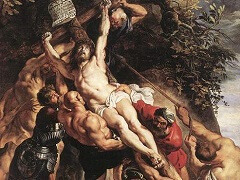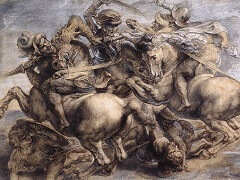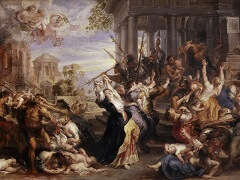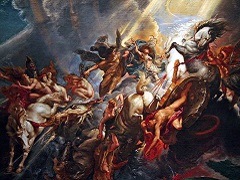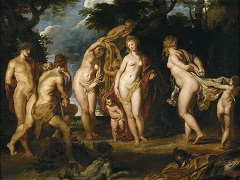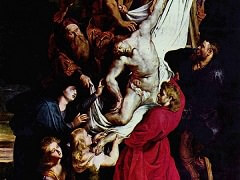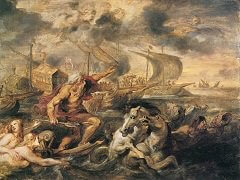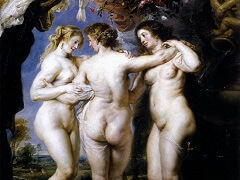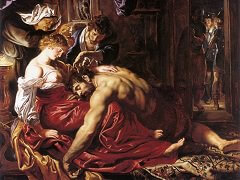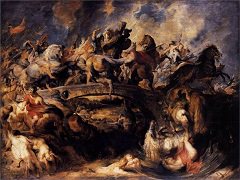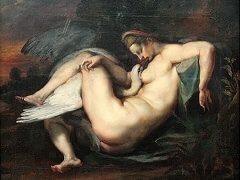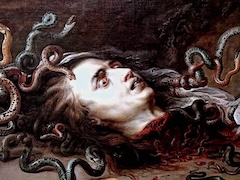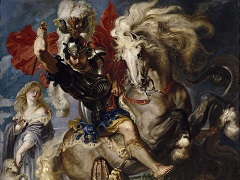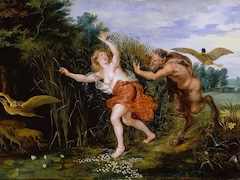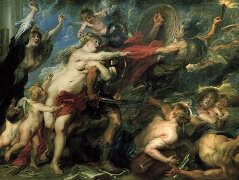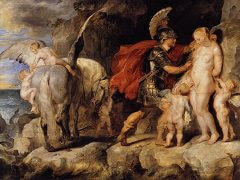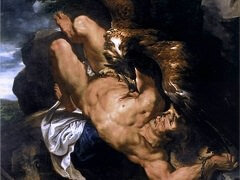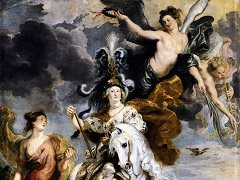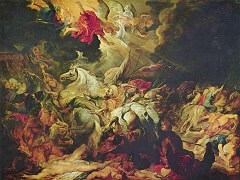St Sebastian, 1614 by Peter Paul Rubens
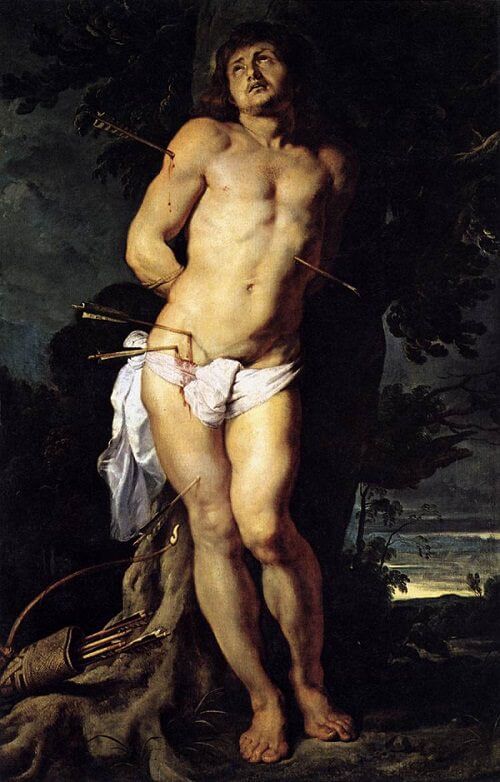
After Sebastian had survived execution by bowmen and protested publicly against the persecution of the Christians, the Roman Emperor had him slain. The miraculous deliverance of the saint, transfixed by arrows, was regarded even in early times as a parallel to the resurrection of Christ. The figure of the martyr as portrayed by Rubens is also intended to recall the Crucifixion. Bound to a tree, his eyes turned upwards to heaven, he seems only slightly affected by the bleeding wounds. The way in which the bound man twists his body may be taken as a sign of pain but this does not lessen its beauty, which is that of a hero of antiquity.
In his Sebastian picture, which must have been painted c. 1614, Rubens realized many of the impressions he had gained during his eight years in Italy (1600 - 08). The sculptural, corporeal quality of the saint's figure reminds one both of the antique and of Michelangelo's works. The contrasting light and shade and the realistic treatment of detail were touches that Rubens had learned from Caravaggio. But in combining the statuesque figure with the atmosphere of an evening landscape, the Flemish painter surpassed his Roman master. Here the tragedy of the event finds adequate expression in the language of nature.
In a letter of 1618 to Sir Dudley Carlton, Rubens mentions a selection of his own paintings, which he had kept back in his house 'for his own pleasure' and which he was prepared to exchange for works of art in the possession of the English diplomat. Among the pictures included in the painter's offer is a 'naked Saint Sebastian by my hand', in all probability the one now in Berlin.

